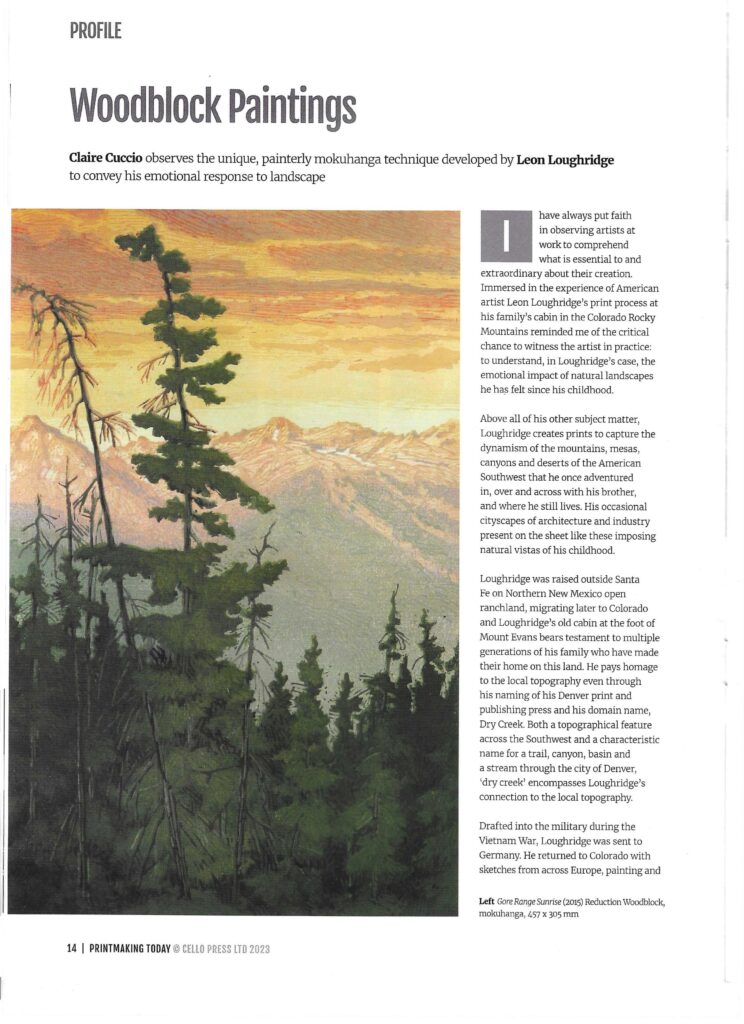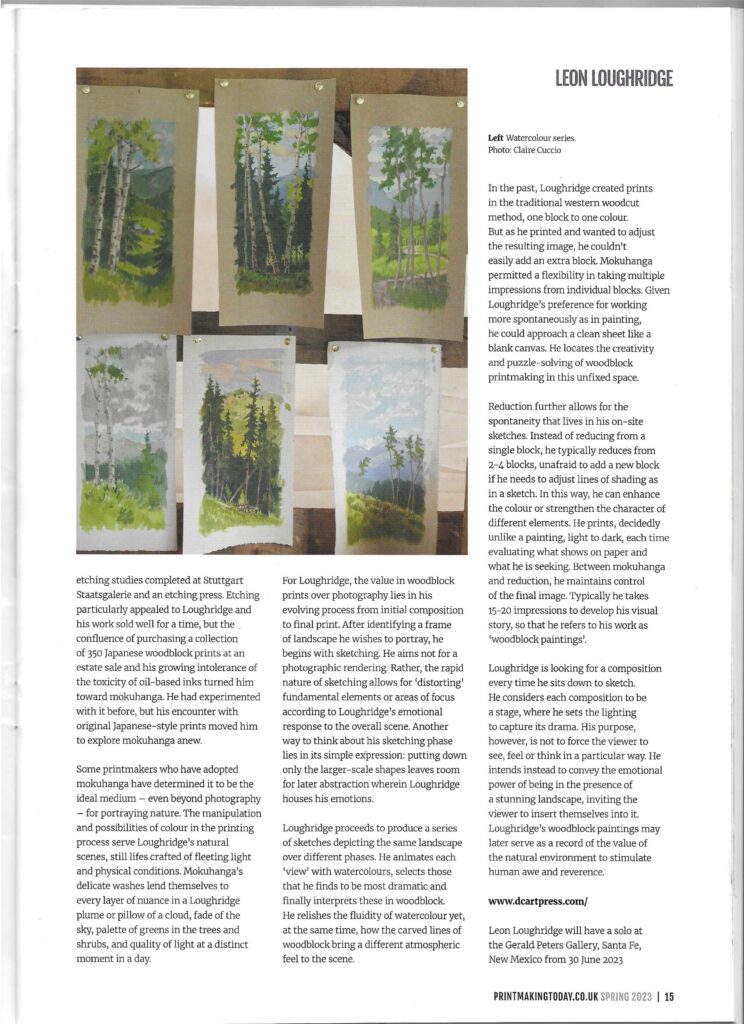Enjoy this profile on Leon Loughridge and his woodblock paintings from Printmaking Today Magazine’s Spring 2023 Issue. Claire Cuccio observes the unique, painterly mokuhanga technique developed by Leon Loughridge to convey his emotional response to landscape.
I have always put faith in observing artists at work to comprehend what is essential to and extraordinary about their creation. Immersed in the experience of American artist Leon Loughridge’s print process at his family’s cabin in the Colorado Rocky Mountains reminded me of the critical chance to witness the artist in practice: to understand, in Loughridge’s case, the emotional impact of natural landscapes he has felt since his childhood.
Above all of his other subject matter, Loughridge creates prints to capture the dynamism of the mountains, mesas, canyons and deserts of the American Southwest that he once adventured in, over and across with his brother, and where he still lives. His occasional cityscapes of architecture and industry present on the sheet like these imposing natural vistas of his childhood.
Loughridge was raised outside Santa Fe on Northern New Mexico open ranchland, migrating later to Colorado and Loughridge’s old cabin at the foot of Mount Evans bears testament to multiple generations of his family who have made their home on this land. He pays homage to the local topography even through his naming of his Denver print and publishing press and his domain name, Dry Creek. Both a topographical feature across the Southwest and a characteristic name for a trail, canyon, basin and a stream through the city of Denver, ‘dry creek’ encompasses Loughridge’s connection to the local topography.
Drafted into the military during the Vietnam War, Loughridge was sent to Germany. He returned to Colorado with sketches from across Europe, painting and etching studies completed at Stuttgart Staatsgalerie and an etching press. Etching particularly appealed to Loughridge and his work sold well for a time, but the confluence of purchasing a collection of 350 Japanese woodblock prints at an estate sale and his growing intolerance of the toxicity of oil-based inks turned him toward mokuhanga. He experimented with it before, but his encounter with original Japanese-style prints moved him to explore mokuhanga anew.

